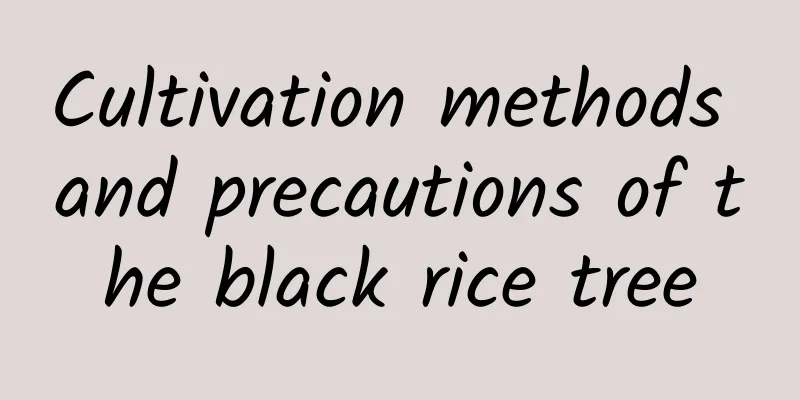Cultivation methods and precautions of the black rice tree

|
The black rice tree may be unfamiliar to friends in the north, but it is very familiar to friends in the south. In the south, there is a custom of eating rice made from the black rice tree. Generally, black rice is eaten on the third day of the third lunar month or the eighth day of the fourth lunar month. The black rice tree is relatively easy to grow. It has a beautiful shape and is resistant to severe cold. It can be placed outdoors for cultivation. If it is well maintained, its flowering period is relatively long, and its ornamental value is also relatively high when it blooms. How to cultivate the black rice tree1. Soil When cultivating the black rice tree, you should choose soil that is rich in organic matter, loose and has good drainage properties. You can mix humus soil and ash in a 1:1 ratio and use this kind of soil. It is also more suitable for the growth of the black rice tree. 2. Temperature When cultivating the black rice tree, it needs to be placed in a warm room, and the temperature in winter cannot be lower than 5 degrees Celsius, otherwise the plant will be frozen. However, when the temperature is too high in summer, water mist should be sprayed around the old black rice stump. 3. Fertilizer and water When cultivating the black rice tree, fertilization should follow the principle of timely and appropriate amount. In spring, phosphorus fertilizer can be applied once a month, and nitrogen and phosphorus fertilizers can be applied 1-2 times after the flowers bloom. In the alkaline soil areas in the north, watering is mainly based on alum fertilizer water and rainwater. You can also add a small amount of ferrous sulfate and vinegar to the water. Precautions for the maintenance of the black rice treeWhen caring for the black rice tree, pay attention to pruning according to the growth of the plant. In the early stages of its growth, you need to pinch off the top to control the growth rate of the branches and leaves. And when the black rice tree is growing vigorously, you need to cut off the dead branches, old branches and diseased branches. |
<<: Cultivation methods and precautions of mountain peach grass
>>: Is Cotinus coggygria suitable for indoor cultivation?
Recommend
When is the best time to sow onions?
If you want to grow high-quality and high-yield g...
Why do the leaves of “Pothos” always turn yellow? The old flower farmer tells you that it is because of the lack of "it"
Colleagues at the company couldn't stand it a...
How to use and dosage of gibberellic acid
Gibberellic acid is a broad-spectrum plant growth...
How to prune a maple tree
1. Pruning time The compound maple tree has a str...
How much can you earn from growing loofah per acre?
The nutritional value of loofah is very rich, bec...
Before you change the flowerpot, you need to know this!
The two sides of repotting If you want to give pl...
How to make the jasmine flower on New Year's Day
1. Flowering period The flowering period of the o...
What are the requirements for soil for growing orchids? Can orchids be grown with soil?
1. What are the requirements for soil for growing...
What flowers to give on a first date
1. Yellow Rose It is not appropriate to give gran...
What should I feed fish in a fish pond to make them grow faster?
Fish farming in fish ponds is a common farming me...
What to do if the cactus has rotten roots and stems
Causes of cactus root and stem rot There are two ...
How to water Photinia
Watering tips for Photinia Photinia is a plant of...
How big a pot do roses need to be planted? The whole process of planting potted roses
1. How big a pot do you need? When planting roses...
What are the cultivation methods and precautions of cactus
Growth habits of cactus Cactus likes light, but i...
What are the cultivation methods and precautions of four-season camellia
Growth habits of four seasons camellia Four-seaso...









